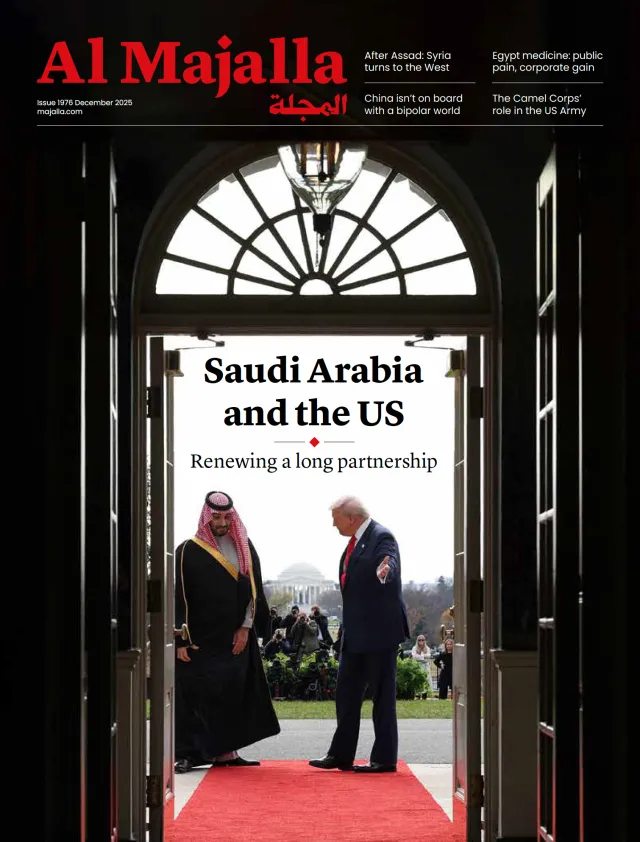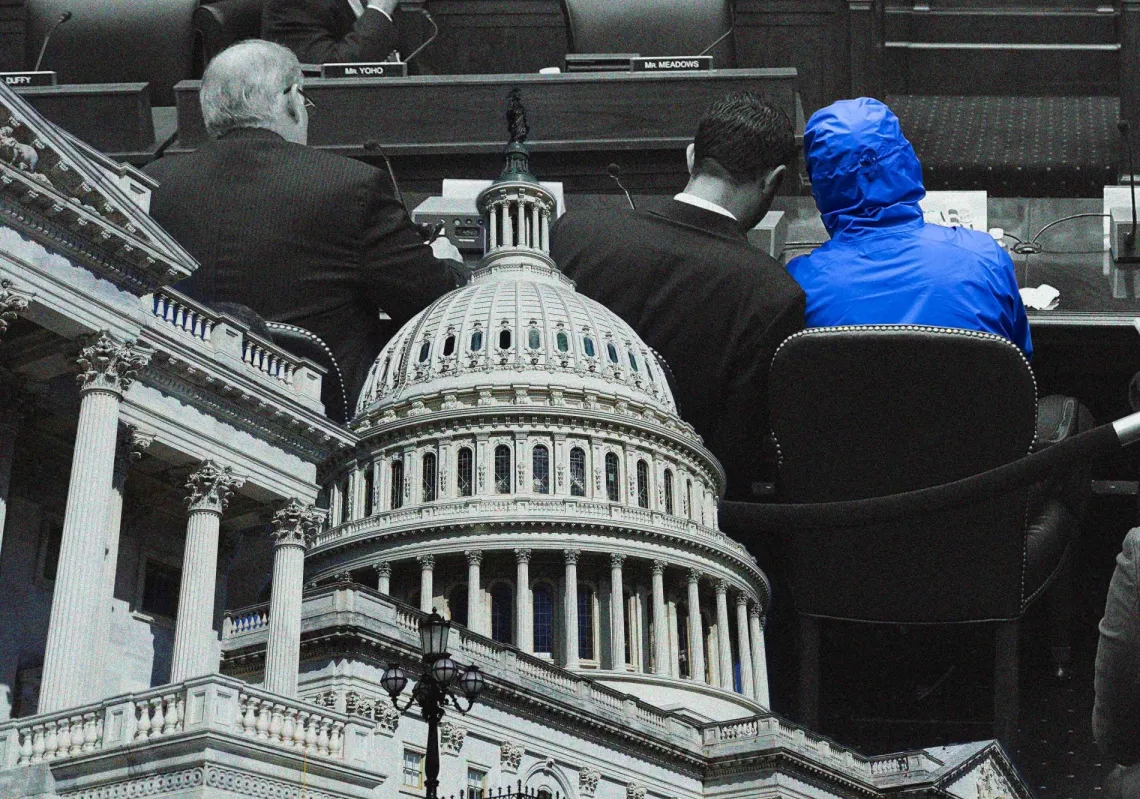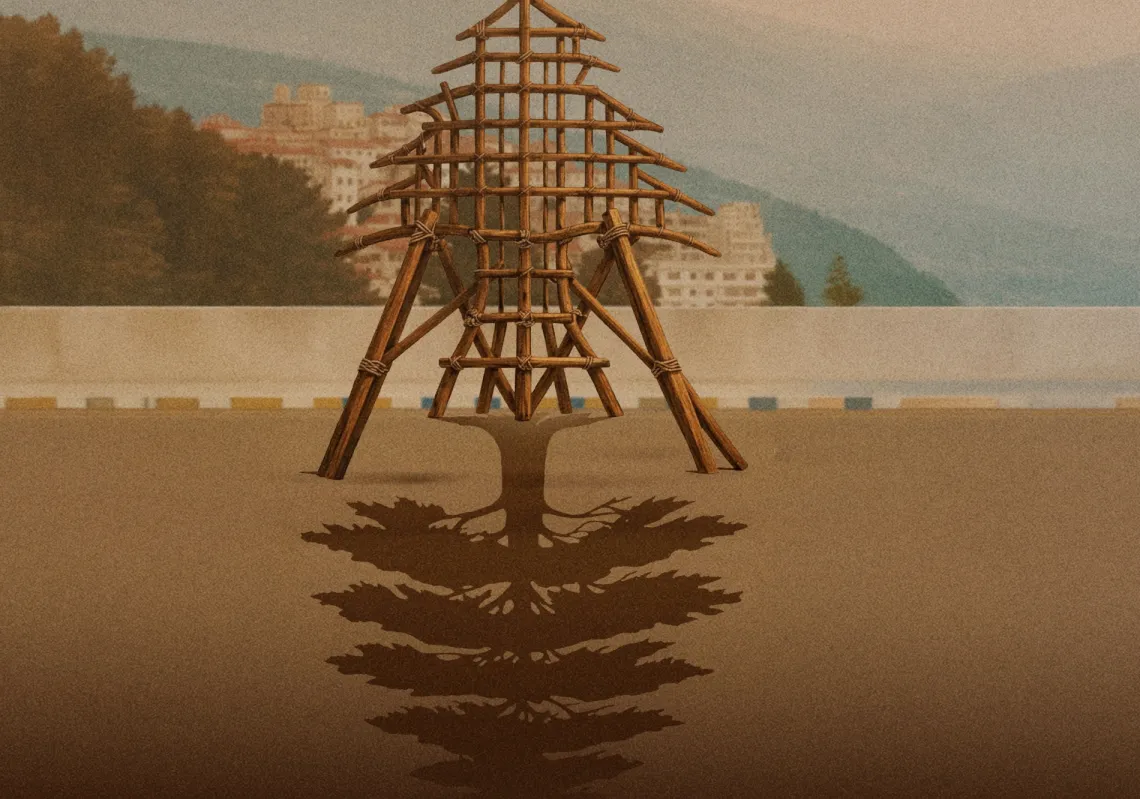Ever since the Ba’ath Party took power on 8 March 1963, Syrians have been forced to celebrate the day. This year, for the first time in over six decades, it will be different. There will be no Ba’ath Party flags on the streets, no celebratory posters, no songs or speeches in honour of the coup.
After Bashar al-Assad's toppling in December 2024, the Ba’ath Party has been consigned to history. After his fall, the party suspended its activities and formally dissolved on 29 January, having held the country by the throat for so long.
Its disgraceful end starkly contrasts with the lofty ambitions of its early years before it seized power. This is the story of the rise and fall of a movement, the toll it took on the country, and how the damage may be repaired.
The Ba’ath Party’s founding documents in 1947 reveal how it wanted Arab societies to look. The name translates as "renaissance" and its founding fathers, Michel Aflaq and Salah al-Bitar, wrote an outline of how to bring such rebirth to society and the Arab world.
The sense of promise the movement channelled in its infancy helped it attract bright and capable Syrians in the 1940s and the 1950s. But after it came to power in 1963, it started to change. Party members were given the best jobs and best pay not because of merit or achievement, but simply because they were Ba'athists. Taking full control of the state, they obstructed the rule of law, corrupted schools, and purged the public sector, insisting on loyalty to the party above all else.

Read more: Assad's fall: The end of an era
This monopoly on power produced corruption. It consumed the financial and moral resources of the state. The party hijacked the potential of the Syrian people and destroyed the society that it set out to develop.
A one-party state
For 62 years, the Ba'ath and the state melded together, creating exclusivity, political immunity, and a lack of competition and scrutiny. The party became an active breeder of corruption on the political and corporate level, and joining it meant only one thing to a new class of opportunists: access to power.
Cronyism, nepotism, influence peddling, collusion, extortion and bribery all prevailed in a one-party state, with unrivalled control. The line between the symbols of the Ba'ath and the Syrian state became increasingly blurred, destroying all principles of nationalism and statehood.
The Ba'ath flag was given predominance over the Syrian flag. The 8 March anniversary was given more prominence than the anniversary of Syrian independence from the French on 17 April. People were forced to celebrate it out of coercion rather than conviction.
The coup that ushered in the Ba’ath Party era came after a chaotic political period in the country. In March 1954, Syria’s aging president Hashim al-Atassi returned to Damascus from his native Homs to complete what remained of his constitutional term, which had been interrupted by the Adib Shishakli coup of November 1951.

Al-Atassi was a civilian president elected to office, and he was one of the founders of the modern Syrian state who had supervised its first, second, and third constitutions (1920, 1928, and 1950 respectively). He served as president in 1936-1939, and then again in 1950 before being forced to resign by the Shishakli coup in 1951.
Following Shishakli's resignation, President al-Atassi decided to try to expunge him from Syrian history, abolishing most of his decrees and restoring the parliament of 1949 and the constitution of 1950. It was a relatively easy task given that Shishakli had ruled Syria for only three years, and was president for only seven months.
However, he didn’t deserve such punishment given that his short era was one of the most reform-oriented in modern Syrian history. This was almost repeated in 1961, when a group of Damascene officers toppled the Syrian-Egyptian Union in September and also toyed with the idea of restoring Syria’s former president Shukri al-Quwatli to office, wanting to write off the years of his Egyptian counterpart Gamal Abdel Nasser, who had presided over a police state in Syria.
Read more: The United Arab Republic: A look at Egypt and Syria's shortlived union
The rebel officers also strove to restore the parliament of 1954 and the cabinet of 1956, but al-Quwatli said no, claiming that he wanted to retire from politics. As a result, Nazim al-Qudsi was elected president in December 1961, becoming the last democratically elected president before the Ba'ath coup of 1963.
Surviving political parties
All those who were in power in the pre-Ba’ath era are now long dead, and so are the political parties that operated in pre-Ba'ath Syria, with only three exceptions: the Syrian Social Nationalist Party (SSNP), the Syrian Communist Party, and the Syrian branch of the Muslim Brotherhood.
The Brotherhood still operates in exile, but the SSNP and Communist Party were both disbanded last January, at the same time the plug was pulled on the Ba'ath Party. Some activists are already discussing ways to revive the National Party and People's Party, two central pillars of Syrian politics in the 1950s before being outlawed by the Ba'ath in 1963. Both were ideology-free parties, with the National Party representing Damascus's political and business interests, and the People's Party representing the interests of Aleppians.
The National Party was driven by the commercial interests of the Damascus merchant class and strove for stronger ties with Saudi Arabia and Egypt, while the People's Party favoured unity with Iraq. Their offices had been confiscated in 1963 and their leaders were either sent to jail, exiled, or forced into political retirement until their death.

Tricolour revival
Syrians restored their pre-Ba'ath flag, the tricolour revived by the Syrian opposition. It was raised high in the skies of Damascus on 8 December 2024, returning after being taken down by the Ba'athists in May 1964, and erroneously labelled as a symbol of colonialism.
Some are even giving serious consideration to doing away with Syria’s National Anthem because it glorifies the armed forces. But it actually had nothing to do with the Ba'ath and was penned by celebrated poet Khalil Mardam Bey back in the 1930s.
Nonetheless, many things can be done to erase memory of the two Assads and the Ba'ath Party, like restoring private property that was seized by the state in 1963 and then again after 1970, belonging to Syria’s old moneyed elite and opponents of the former regime.
The list is long and includes al-Assad’s home in Damascus (property of Syrian-Saudi physician Dr. Rashad Pharoan), his summer home in Zabadani (property of Syrian industrialist Anwar al-Dasouki), the presidential palace in al-Muhajireen (property of the Idlbi family), the al-Rawda Palace, and the office of the vice-president in Abu Rummaneh, which belonged to Syria’s last pre-Ba'ath Prime Minister Khaled al-Azm. His mansion in Souq Saruja was seized by the Ministry of Culture and his summer home in Ghouta by the Ministry of Health, while Azm himself was exiled to Lebanon and died there in 1965.
The Ba'ath party seized hundreds of other residential homes, private factories and banks, throughout Syria in the 1960s. Schools were also taken, including Christian ones run by nuns and brothers, which could now be restored to their rightful owners.
A series of socialist laws passed between 1963 and 2024, especially those relevant to the economy and education, could also be repealed. Much of this legislation distorted Syria’s history and glorified the Assads.
Syria needs to re-evaluate entire chapters of its history books. One would be on how the Ottoman period is taught to school children. Under the Ba'ath, it was constantly described as an “occupation,” although it was no different from the Abbasid, Fatimid, or Mamluk eras.

The commander of the 4th Ottoman Army in Syria during World War I, Djemal Pasha, was always referred to as “Al-Saffah” (The Butcher) but all he did was execute 11 figures in August 1915, and another 21 on 6 May 1916. That’s a very small number when compared to the half million Syrians killed by Bashar al-Assad, not to mention the thousands killed by his father or those who disappeared in his dungeons.
Fast forward until the mid-20th century history, where Ba'ath party books glorified Gamal Abdel Nasser and trashed pro-Western Arab figures like Iraqi Prime Minister Nuri al-Said, describing him as an “agent of Zionism and imperialism.”
The name-calling continues with other figures like King Hussein of Jordan, Palestinian President Yasser Arafat, and most prominently, Egyptian President Anwar Sadat who Syrians were taught to hate – from childhood – simply because Hafez al-Assad despised him.
In 1973, Syria teamed up with Sadat and launched a war on Israel. The Syrian Army was defeated and al-Assad seriously considered moving the capital to Aleppo, given that the Israelis reached the outskirts of Damascus. Despite that, Hafez al-Assad insisted that the 1973 war was a “victory” and even called it “the October War of Liberation.”
The destruction of a vibrant press
When the Ba'ath Party came to power in 1963, the country was home to 46 Syrian publications ranging between dailies, weeklies, monthlies, and longer-run periodicals. They covered politics, cultural affairs, and literature. They were successful publications that lived off subscriptions, advertisements, and in some cases, support from Syria’s political parties.
With the stroke of a pen, all of them were outlawed by the Revolutionary Command Council in 1963. For five solid decades, Syria was left with three semi-identical regime newspapers, al-Ba'ath, al-Thawra, and Tishreen. One has been shut down, and two have been renamed and put under administration of Syria’s new rulers.

When Bashar al-Assad first came to power in 2000, veteran Syrian journalist Riad Najib El Rayyes tried reviving his father’s popular daily al-Qabas but was forced to abandon the project due to resistance from the Ba'ath regime. He died in Beirut in September 2020 without revisiting the project.
More recently, the sons of Najib al-Rayyes’ contemporary Abdul Ghani al-Otari came out with an online version of their father’s flagship magazine al-Dunia, which was also forced to close on 8 March 1963. This might inspire the children and grandchildren of former publishers also to try – if they are interested and are financially capable – to breathe life into their ancestor’s newspapers and magazines. It would come across as sweet revenge and much needed in the Syrian media landscape of 2025.
Symbolic step
One symbolic step would be to restore the true meaning of 8 March. Long before being hijacked by the Ba'athists, it was celebrated as the date of Syria's first independence from the Ottomans in 1920.
On 8 March 1920, Emir Faisal was crowned as king, and Damascus formally rejected both the Balfour Declaration for Palestine and the French Mandate for Syria. Syrians saved the date and continued to celebrate it. Another occasion was added to it when the French evacuated in 1946. Syria then got two independence days: one from the Ottomans in 1920 and one from the French in 1946. Then came the Ba’ath Party. It belittled the Independence Day of 1946, cancelled all references to 1920, and replaced it with a festive celebration of its own coup, which it called a "glorious revolution."
Among the many ways forward would be to restore the true meaning of 8 March as a national day for all Syrians, one which really had nothing to do with the Ba'ath Party.











